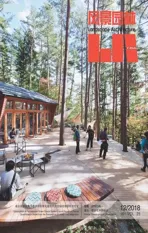一套顺应地形的设计框架
——山之厕所
2018-04-17钟惠城合伙人
钟惠城,合伙人
1 设计框架的构建
1.1 立意
昆嵛山国家森林公园正在进行一系列的设施升级,保护区管委会邀请Lab D+H设计一座示范性公共厕所,作为设施升级的启动项目。项目伊始,业主并没想好厕所的具体位置,我们也并没有立即着手设计,而是展开了基于场地的研究。昆嵛山森林公园是一座方圆百里、峰峦绵延的野生动植物基因库(图1),自然保护区内山高坡陡、沟壑纵横,新设施的建设必须遵循最低干预开发(LID)的原则,同时,设施亦应顺应复杂的地势而轻巧地藏置于自然保护区之中。
了解到今后厕所将建设在地形复杂的山地上,我们构建了一个单体模块系统,它能够灵活地根据不同地形自由组合,以便适应性地推广至整个自然保护区(图2、3)。这一想法得到了业主的支持。
1.2 相地
基于这一体系,业主与我们一同“相地”,选择了现有高山植物园的一处高差变化较大的土台地作为厕所基址(图4)。这处土台地最大高差达4m,背靠山腰,面朝远山,可以充分发掘我们模块系统组合的潜力。在英语系国家中,厕所被称作“restroom”,即“休息处”,虽然起源于委婉的表达,但也希望如厕是件惬意的事情。因此,我们希望把台地上的“休息处”设计成一个景观化的“休息驿站”(图5)。
2 设计
2.1 基于场地的设计框架
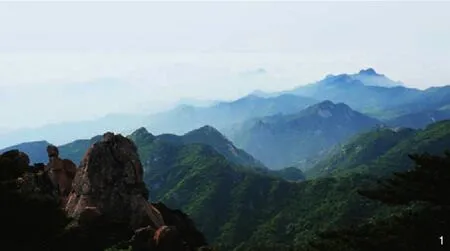
1 峰峦绵延的昆嵛山国家森林公园Overlapping peaks, Kunyu Mountain National Park

3 模块间灵活的组合以获得适应性的调整Combination of modules for adaptation to topography
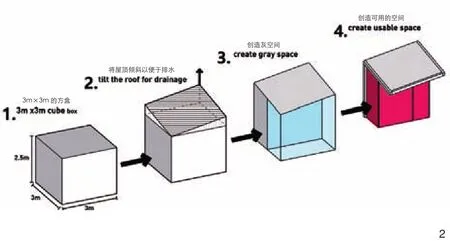
2提议构建的模块体系Proposed modular system

4高山植物园一隅的土台地Terrace at the corner of the alpine arboretum
通过单体模块的组合,一个顺应地形变化的庭院生成了。袖珍的中庭被一条时上时下的围廊环绕,为普通的如厕体验赋予了诗意的感受。在视野最佳处设置的景观平台,为等候的家庭成员提供休息与观景场所(图6)。起伏的庭院分为2部分:休憩空间与功能空间,通过一条环状连廊串联而成。休憩空间由几组连续的模块单体转换过渡而成,形成亭子与露台,作等候与赏景之用。厕所空间按功能分为男厕、女厕、家庭用厕3类,环绕于庭院(图7~13)。
2.2 设计细节
沿对角线起坡的单体,经过适应性地组合后,呈现出具有几何美感的屋脊线,促成了与昆嵛山嶙峋的山脊线的对话。厕所的表皮采用小枝与磨砂玻璃并置,在保证隐私的同时又能产生优雅的光影效果。为考虑方便性,厕所内设计有放置小件物品的木台和兼具桌子功能的矮凳。从材料到构造方法上,我们都希望厕所的搭建为环境带来最小的干预,并能将单体模块的组合办法推广应用至整个保护区(图14~16)。中庭边缘设有两处洗手处,每处有两块折叠的耐候钢板,一高一低分别给成人与儿童使用,用过的水从钢板缝隙中流入砾石过滤池,水过多时会从无边界的钢板顶部溢流而出并回渗地下。
3 启发
昆嵛山国家森林公园的山之厕所,来自一套因场地而生成的设计方法,将选址、与业主沟通、设计过程乃至建造高效地协同起来,这对我们来说是一次成功而有意义的设计实践(图17~21),同时这一实践为我们带来了一些启发:1)业主开放、包容的态度为设计师的思考与设计提供了互动的空间。以这一项目为例,业主始于不确定场地的委托以及对模块提议的接受是设计推进的关键。2)从本项目设计框架引申出来的设计方法,是一个开放的设计与建造系统,尤其适用于山地上的建设。3)虽然设计框架是开放而顺应地形的,模块的独特性可以为场所带来独特的场所身份。
(编辑/宋恬恬)
项目位置:烟台,中国
业主:昆嵛山国家级自然保护区管理委员会,于丛刚
完成时间:2018年1月
建筑师与景观设计师:Lab D+H
主持设计师:钟惠城
设计团队:钟惠城、崔荣埈、梁宗杰、黄金、蓝皓、宋妃敏
场地面积:250m2
获奖:WAN小空间类最终入围奖、International Green Apple环境奖金奖、Core77人居环境奖
摄影:唐曦、于丛刚
文字:钟惠城

5 设计框架构建过程Process of design framework

6 平面图Plan
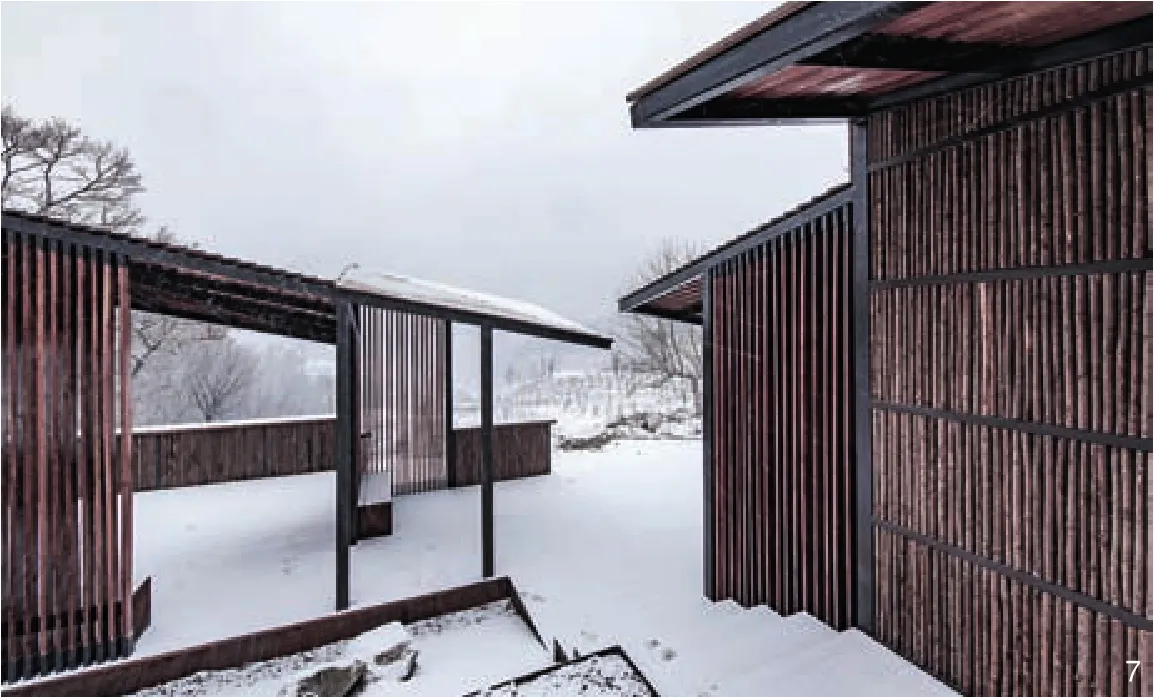
7 不同朝向的屋顶坡面Pitched roofs with different angles
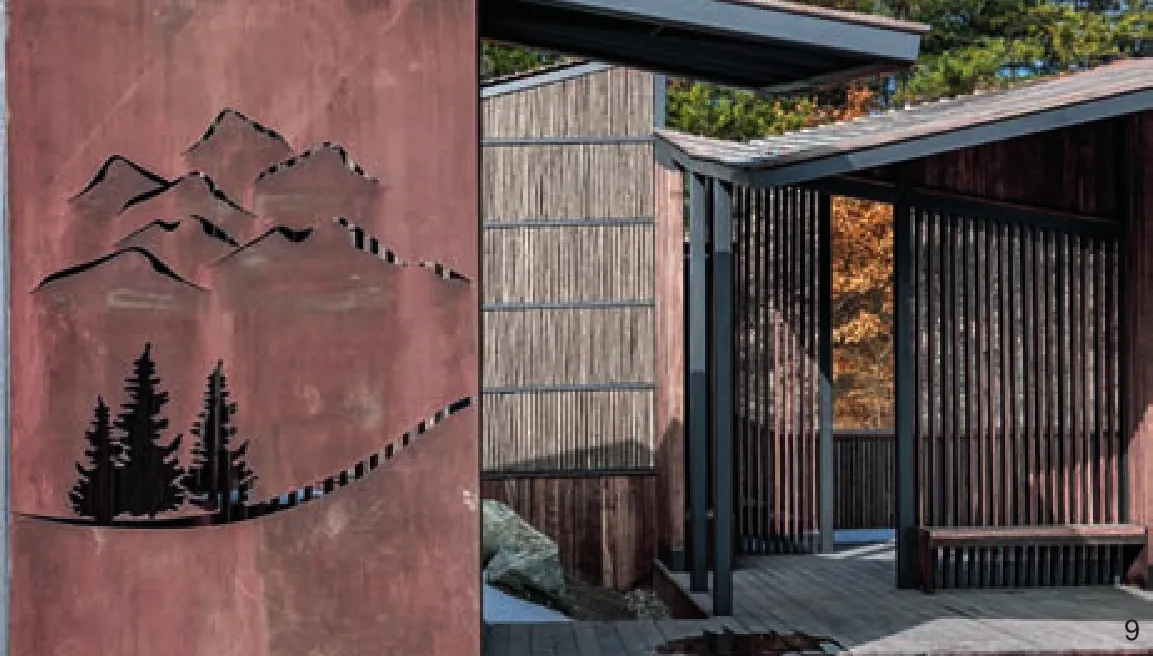
9 连续的景观亭形成休憩空间Continuous transition of space
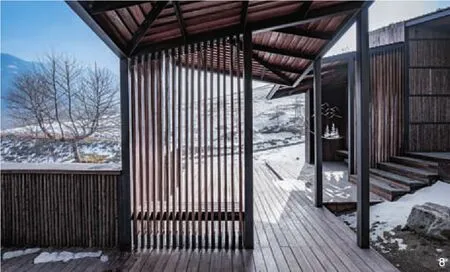
8 单体模块间格栅的使用Use of louver
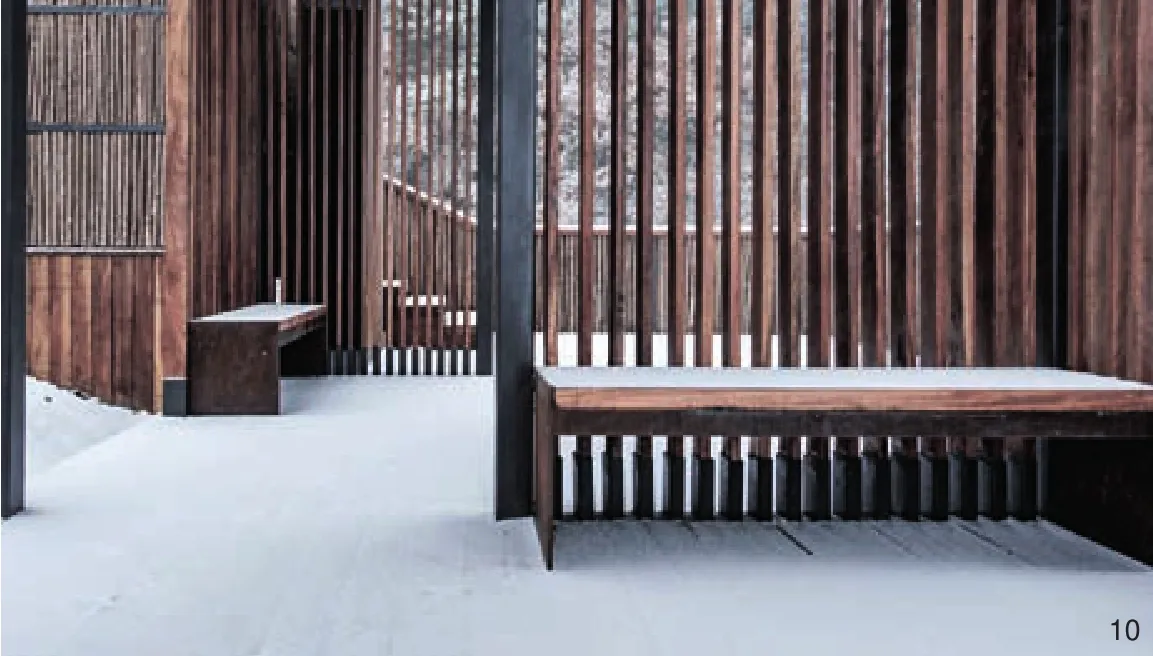
10 不同朝向的等候坐凳Waiting bench with different orientation
1 Formation of the design framework
1.1 Initial idea
China’s Kunyu Mountain National Park is promoting a series of facility upgrades within its 50km2national natural preserve, and the management committee invited Lab D+H to design a pilot public toilet which would serve as the new model of public facility in the Kunyu Mountain National Park. At the very beginning, client had not decided where the toilet would be located.Therefore, instead of proposing a restroom design,we put forward a modular system which can be adapted based on different topographic conditions.
1.2 Site selection
This site-specific strategy was greatly appreciated by the client and together, we chose a site: a terrace within the current alpine botanical garden at the edge of the forest.
In English-speaking society, a toilet is often referred to as a “restroom”, insinuating that it is a place for rest. Therefore, instead of designing the toilet building, we decided to create a graceful and restful place in dialogue with nature, specifically within this environmental sensitive place.

11休憩空间与功能空间Rest space and function space

12 2018年大雪瞬间Snow in 2018

13 冬天的山之厕所Restroom in winter
2 Design
2.1 Design framework that addresses topography
Through adaptation and organization of the modules, a courtyard was created based on existing terrace contour. The courtyard garden was wrapped by a canopied corridor running both up and down. The setting of the viewing deck provided a waiting place and the best viewing spot towards the mountain.
The canopied corridor threaded the courtyard’s two parts: the rest area and restroom area. The rest area was formed by continuous transition of modular pavilions, for waiting and view-seeing. The restroom area was divided into men’s room, lady’s room and family’s room.
2.2 Design details
After assembling the module, the diagonally pitched roof units formed a geometric silhouette,generating a dialogue with the rolling mountain ridge. The restroom skin was juxtaposed with twig and sanded glass, protecting privacy while creating interesting light & shadow effect. There were two hand-washing points at the edge of courtyardwhere water was charged directly to the ground after being filtered from the gravel basin.

14 单体模块结构轴侧图Modular axon

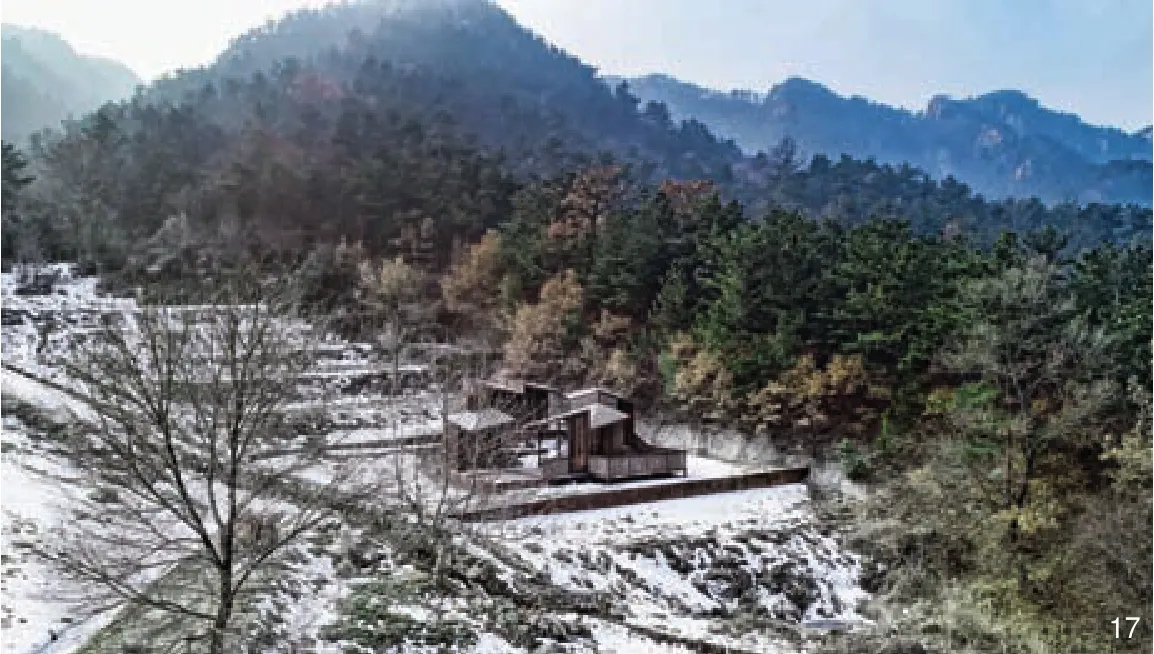
17 冬天的山之厕所,2018Restroom in winter, 2018

16 粗糙的小枝与细腻的格栅Juxtaposition of rough twig and smooth louver

18春天的山之厕所,2018Restroom in spring, 2018

20 初秋的山之厕所,2018Restroom in early fall, 2018

19 面朝大山,春暖花开Restroom in blossomed spring

21 驴友发现厕所“惊喜”后的自拍Hikers’ selfie after finding restroom’s surprise
3 Inspiration
From site selection, design strategy and materiality all the way to construction method,an innovative low impact design approach was adopted. This modular system was proved to be easily applied to the facility upgrade endeavors throughout the national park. We are currently working on two more restrooms with client in two other locations based on this modular approach with different topographic conditions.
As landscape architect, sometimes we are committed with architecture design within landscape projects, our proposal always try to merge architecture with landscape. Views, planting,experience and topography related to the site are always our starting point of design. The Restroom in the Mountains is a meaningful practice, where a systematic design method is generated based on the site condition. This method coordinates site selection, communication with client, design process as well as construction seamlessly.
Project Location: Yantai, China
Client: Kunyu Mountain National Park Management Committee
Year of Completion: January 2018
Architects and Landscape Architect: Lab D+H
Project Designer: Huicheng Zhong
Design Team: Huicheng Zhong, YoungJoon Choi, Zongjie Liang, Jin Huang, Hao Lan, Feimin Song
Site Area: 250m2
Awards: WAN Small Space Finalist, Gold Award,International Green Apple Environment Award,Core77 Built Environment Award
Photographs: Xi Tang, Conggang Yu
Text: Huicheng Zhong
